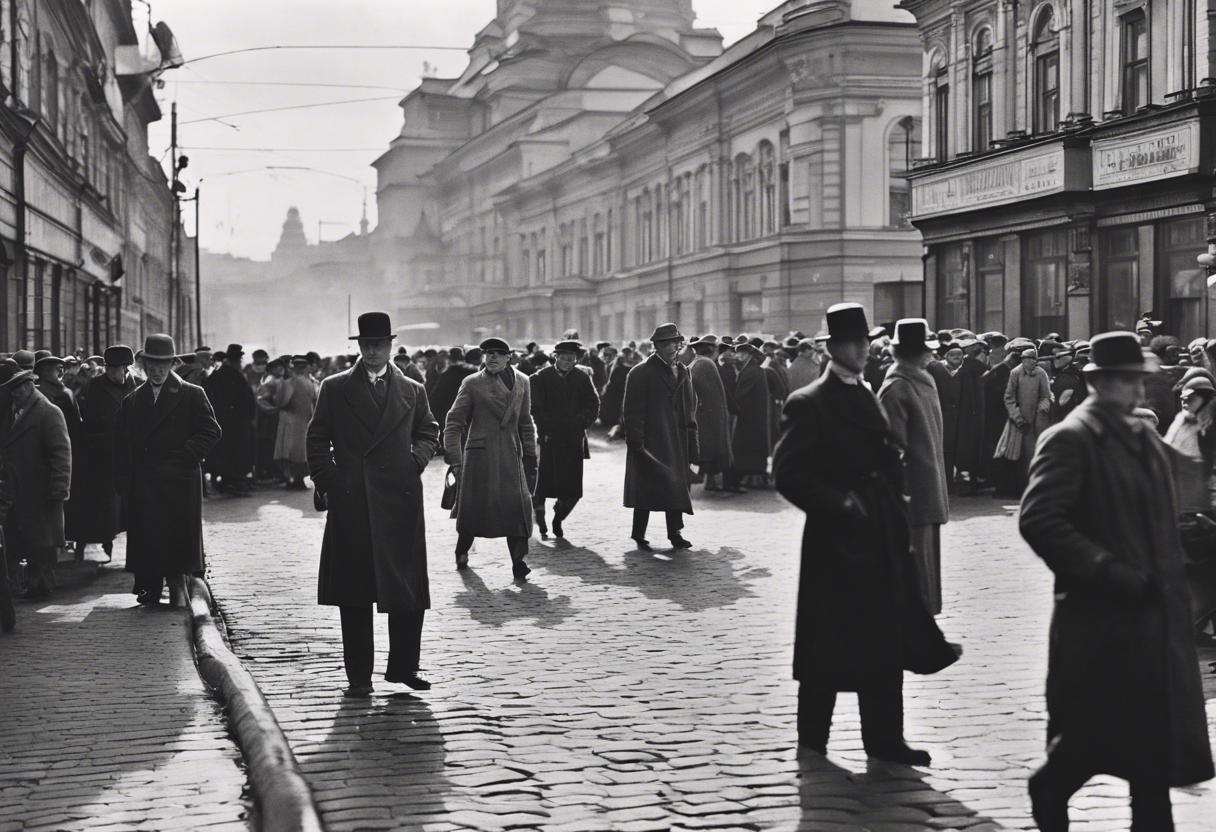In the nascent days of communism, Moscow’s Hotel Lux served as a sanctuary for party officials and sympathetic visitors from overseas. The hotel on Tverskaya Street was gradually ravaged with a rodent infestation due to the neglect that came with state ownership, following its formerly private luxurious origins. Notably, Ho Chi Minh, a visitor from Vietnam, was forced to switch rooms due to the rat issue.
By the 1930’s, the Hotel Lux was turned into a Soviet Hotel California of sorts, where residents couldn’t leave at will if they were suspected by Stalin. Arrest and execution were commonplace for those deemed suspect, such as possible spies.
However, around the mid-1920s, the Lux was known as a “residential area for world revolution”. Among its residents was a nearly middle-aged Irish woman, May O’Callaghan, whose contributions to revolutionary history have previously been overlooked in her homeland.
O’Callaghan’s fascinating narrative was the topic of an interesting discussion at the Dublin History Festival. This took place at Richmond Barracks on Tuesday and was delivered by Maurice Casey, a historian from Queen’s University. Maurice based his talk on his new book about the hotel, dubbed ‘An intimate history of communism’s forgotten radicals’.
May O’Callaghan was born to a well-off family in Wexford in 1881 and was an improbable communist. Her father served as an RIC head constable. Despit her intelligence, the societal norms of the era dictated that her prospects for a career were limited, even though she qualified for higher education, an unusual accomplishment for women of her time.
Her unlikely academic journey led her to Moscow, with a stopover in Austria. Following her married sister, O’Callaghan pursued language studies at the University of Vienna. Subsequent plans to head westwards to America to endorse her Austrian brother-in-law’s enterprise were halted by the onset of the First World War, leaving her in England.
Having found herself in London, jobless, she secured employment as an assistant editor at The Woman’s Dreadnought, a publication championing women’s rights overseen by Sylvia Pankhurst. Pankhurst was captivated by the Irish lady’s magnetic personality and wit.
Partially because of O’Callaghan’s influence, the Dreadnought achieved notoriety for its empathetic portrayals of Ireland during its time of rebellion. Concurrently, her work introduced her to London’s vibrant east end, a mixing pot of Eastern European Jewish immigrants with progressive political ideologies.
O’Callaghan’s sphere of friends came to include a Polish woman named Nellie Cohen, who would later contribute an Irish spin to this narrative. The multilingual O’Callaghan, particularly proficient in Russian, was brought to the Soviet Union in 1924. The Soviet Union, keen to propagate its message globally, was not short of speeches requiring translation.
This role afforded her a distinguished address in the Hotel Lux, Room No 5, which commanded a view of the street parades. This location soon became a social hub, hosting a sort of literary gathering. O’Callaghan had developed a revolutionary taste in literature and penned the first Russian critique of Joyce’s Ulysses under the pseudonym “Eugene Fogarty”.
Despite her four-year tenure at the Lux, O’Callaghan surprisingly never aligned herself officially with the communist party. Nor did she maintain her radical political stance in her subsequent life, which spanned until 1973. However, by her time of departure from Moscow, she had oddly enough developed a reputation as a Trotskyite, barring her from ever stepping foot there again, a prohibition that may well have been a lifesaver for her.
Arguably, the most lasting imprint of her communist stint was a story of lasting friendship, and eventually romantic love – lesbian love to be specific. O’Callaghan herself can be inferred to have been homosexual, though she appeared to struggle with expressing it openly.
She maintained a particularly close bond with two women who went on to become mothers. In fact, her stay in Moscow was punctuated by their respective pregnancies. One of them was Emmy Leonhard, a German translator like herself and a member of the communist party. O’Callaghan covered the costs for Leonhard’s taxi ride and stay at the Kremlin hospital when she gave birth to a daughter, Elisa, in 1925.
In the late 1920s, visitors who graced the Lux had the pleasure of meeting Irish prose writer, Tom O’Flaherty, whose brother Liam held a close friendship with O’Callaghan from their days at Dreadnought. A notable encounter during this period saw Nellie Cohen cross paths with the more famous O’Flaherty brother, Liam, in London due largely to an introduction by May. Following a liquid-fueled liaison, Cohen found herself expecting a child.
Unbeknownst to Liam O’ Flaherty, his one-off affair had resulted in the conception of a daughter named Joyce, whose existence he would learn of only three decades later. Despite initial denial, he ultimately acknowledged her. During the unfolding of these events, O’Callaghan, having abandoned Moscow to help her pregnant friend, aided Cohen in raising the baby.
Fast forward to approximately 1963, the mature offspring were captured in a photograph together on O’Connell Bridge in Dublin. The image, possibly shot by the accomplished photographer Abraham Feldman, better known as Arthur Fields, exemplified his talent honed over half a century at that very location. Included in Casey’s literature, the photo depicts the women locking arms, resembling ordinary female companions of that period. However, Casey’s research uncovered a deeper relationship: by this point, they were a devoted couple, representing an unexpected yet joyful development arising from the turbulent happenings in London and Moscow four decades prior.

